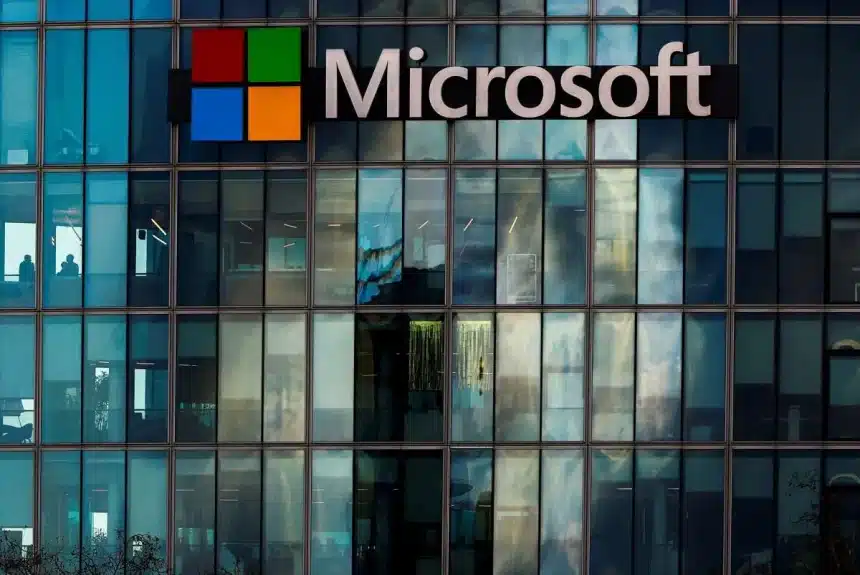The beginning of 2025 was a moment that shook the digital world. A massive cyberattack successfully exploited a zero-day vulnerability in the Microsoft SharePoint system, widely used by companies and government agencies worldwide. As a result, thousands of entities in the United States, Canada, Australia, and Europe experienced data breaches, system disruptions, and even potential financial losses amounting to millions of dollars.
This case serves as a stark reminder that no system is completely secure in the digital age. Even tech giants like Microsoft are not immune to the threat of increasingly sophisticated and systematic hacking. For businesses, this incident underscores one crucial point: cyber risk is no longer just an IT issue, but a real threat to business continuity.
Imagine if a similar attack hit a company’s internal systems in Indonesia—from customer data theft, production system disruptions, to brand reputation damage due to loss of public trust. Such losses would not only cost money to recover from the breach but could also lead to lawsuits from third parties due to the leak of personal information.
Therefore, amidst the increasingly unpredictable wave of global cyber threats, having cyber insurance is no longer an option, but a strategic necessity. This insurance serves as a financial shield that protects companies from the risks of data loss, operational disruptions, and legal liability resulting from cyber incidents.
To understand and obtain the best cyber protection solutions for your business, trust L&G Insurance Broker. With extensive experience across various industry sectors, L&G is ready to help you assess digital risks, customize coverage, and obtain competitive premiums from leading insurance companies.
Microsoft Cyberattack Case 2025: What Happened?
In mid-2025, the world was shocked by official reports from various international cybersecurity agencies regarding a major attack targeting Microsoft SharePoint, one of the world’s most popular business collaboration platforms. A security flaw, or zero-day vulnerability, in the system was successfully exploited by a high-level hacker group, believed to be from a global network with advanced capabilities and vast resources.
This attack exploited a vulnerability that Microsoft hadn’t patched yet—hence the term zero-day, as no security patch was available at the time of the attack. Once successfully executed, the hackers gained unauthorized access to the internal networks of organizations using SharePoint, including sensitive data, project documents, and even user credentials.
The governments of the United States, Canada, and Australia were among the primary victims. Public institutions had to shut down some of their systems to prevent further spread. Furthermore, several large companies in the financial, energy, and manufacturing sectors were also affected. Some reported days of operational disruption and millions of dollars in recovery costs.
Interestingly, this attack wasn’t just an attack on Microsoft systems, but rather demonstrated how the global digital supply chain can be a vulnerable area. Many companies around the world that don’t directly use SharePoint were still impacted because their business partners’ systems were infected first.
This incident has led to one major lesson: no business is truly secure simply because it has a robust security system. Cyber risks are interconnected—meaning that even a small vulnerability in a third-party network can open the door to massive losses.
The Impact of Global Cyber Attacks on the Business World
This global attack on Microsoft SharePoint is more than just a technical incident—it’s a stark reminder to businesses across the globe that cyber risks now directly impact operational continuity and corporate reputations. On a global scale, this attack demonstrates the fragility of the digital infrastructure that has long been the backbone of modern business.
According to reports by The Washington Post and Reuters, thousands of public and private entities experienced data breaches and internal system disruptions, including financial data, project planning, and personal information of employees and customers. Some agencies even had to shut down all digital activities during the investigation—resulting in significant lost productivity and additional operational costs.
The financial losses from cyberattacks like these can reach unimaginable levels. According to Cybersecurity Ventures (2025), total losses from cybercrime worldwide are estimated to exceed USD 10.5 trillion annually, nearly doubling from the previous five years. This figure even exceeds the combined value of drug trafficking and other organized crime, making cybercrime the largest “illegal industry” in the world.
Beyond the immediate losses, reputational damage is often more difficult to recover from. Companies whose data is compromised often lose the trust of customers and business partners. In today’s transparent digital world, a single security breach can spread rapidly within hours—leading to decreased sales, contract terminations, and even a drop in stock market value.
However, this phenomenon has also opened the eyes of many companies to the importance of integrated cyber risk management, beyond just the use of antivirus or firewalls. Financial protection through Cyber Insurance is now considered an integral part of a global company’s corporate resilience plan.
Cyber insurance provides a layer of financial defense in the event of an attack—covering the costs of forensic investigations, IT system recovery, crisis communications, and even third-party lawsuits resulting from personal data breaches. In other words, a cyber insurance policy is not only financial protection but also part of a modern business continuity strategy.
Why Cyber Insurance Is Now a Primary Need
In the past, many businesses considered cyber threats solely the purview of the IT department. But now, the reality has changed dramatically. Cyberattacks are no longer just a technical issue—they are strategic threats that can shake the entire foundation of a business, from operations and finances to brand reputation.
We live in an era where nearly every business activity relies on data and connectivity. From customer transactions and payment systems to inter-branch coordination—everything is digital. This means that even a single system flaw or a small employee error could open the door for hackers to steal critical company data.
And when it does happen, the costs are significant. According to the IBM Cost of a Data Breach Report 2025, the average loss from a data breach reaches USD 4.88 million per incident, a 15% increase compared to the previous year. The sectors at highest risk are healthcare, financial services, and energy—but this trend is starting to spread to other industries like manufacturing, construction, and even logistics, which are becoming increasingly digital.
This is where Cyber Insurance plays a crucial role. This product not only protects companies from losses due to hacking, but also includes:
- System and data recovery costs – include data restoration, forensic investigation, and replacement of damaged infrastructure.
- Third party legal liability – if a data breach results in legal claims from customers, partners or regulators.
- Crisis communications & reputation costs – including PR services and customer notification to manage public trust.
- Business Interruption – covers financial losses resulting from the interruption of operations due to a cyber attack.
Furthermore, several global insurance companies now offer additional benefits such as cybersecurity awareness training for employees and cyber emergency response team (CERT) assistance in the event of an incident. This means that cyber insurance is not just a “financial product” but part of a comprehensive digital protection ecosystem.
With the increasing frequency of attacks and the complexity of threats, having cyber insurance is no longer a luxury, but a necessity. Companies that delay this protection are essentially opening themselves up to a crisis that could destroy their business overnight.
The Impact of Microsoft SharePoint Zero-Day Attacks on the Business World
A cyberattack exploiting a zero-day vulnerability in Microsoft SharePoint servers not only rocked government institutions in the US, Canada, and Australia—it also created a ripple effect across businesses worldwide. Why? Because SharePoint is one of the most widely used collaboration and data storage systems for medium- to large-sized companies.
When these systems are attacked, the risks include not only temporary operational disruption, but also:
- Sensitive data leak such as contracts, internal documents, and employee information.
- Direct financial loss, both due to downtime and system recovery costs.
- Potential lawsuits from third parties due to customer data leakage.
- The company’s reputation is damaged, which is difficult to recover even if the system has been repaired.
This case demonstrates that no system is completely secure, not even those belonging to tech giants. With the increasing frequency and sophistication of attacks, the need for protection through cyber insurance is becoming increasingly urgent—not just as a response, but as a strategic step in risk management.
Important Lessons from the Microsoft SharePoint Zero-Day Case
From this major case, there are several important lessons that companies in Indonesia can learn:
- Cyber attacks are cross-border
It doesn’t matter which country you operate in — cloud systems, servers, and digital platforms are often globally interconnected. If the security chain is weak at one point, the entire network can be impacted. - IT security is no longer just a technical matter
Cyber attacks are now included in the category enterprise risk, on par with financial and reputational risks. Company directors need to place cybersecurity on the strategic agenda. - Recovery preparedness is as important as prevention
No system is 100% secure. Therefore, a company’s ability to recover (resilience) after an attack is a determining factor in business continuity. - Cyber insurance is becoming a vital financial safeguard
This insurance can cover the costs of investigation, data recovery, notification to customers, and even lawsuits due to information leaks.
Why This Attack Is a Critical Momentum for the Growth of Cyber Insurance in Indonesia
The zero-day attacks on Microsoft SharePoint servers in the United States, Canada, and Australia have served as a global wake-up call—that even the most secure corporate systems can be compromised. And in Indonesia, this is a crucial moment for companies to reassess their preparedness for cyber risks.
1. Digitalization is moving faster than security readiness
Since the pandemic, many Indonesian companies have accelerated their digital transformations—from cloud systems and HR applications to e-procurement. However, not all have been accompanied by adequate investment in security. As a result, a “security gap” has emerged between technological advancements and corporate cyber resilience.
2. Personal data protection regulations are getting stricter
With the enactment of the Personal Data Protection Law (PDP Law), companies now have greater legal liability in the event of a data breach. Violations can result in administrative sanctions, substantial fines, and reputational damage—all of which can be covered by cyber insurance.
3. Market need for financial protection after an incident
When a cyberattack causes downtime or data loss, the impact is immediately felt on financial statements. Cyber insurance has become a crucial financial instrument for maintaining cash flow and business continuity after an attack.
4. Increased awareness of directors and top management
Cyber risk was once considered the responsibility of IT teams. Now, more and more directors and board members recognize that cyberattacks can pose an existential threat to their businesses—as serious as a natural disaster or a partner’s bankruptcy.
Why Cyber Insurance Is an Investment, Not an Expense
Many companies still view cyber insurance as an additional burden. However, in today’s digital age, this policy is actually an investment in reputational and financial protection.
Cyber insurance not only covers losses due to hacker attacks, but also includes:
- Digital forensic investigation to trace the source of the attack
- Recovery of affected data and systems costs of notification to customers and credit monitoring services
- Legal costs and potential third party damages
- Reputation crisis management and public communications
With tailored coverage, companies can choose the protection most relevant to their operational systems — from e-commerce and digital banking to IoT-based manufacturing.
The Role of Insurance Brokers in Getting the Right Cyber Protection
In an increasingly complex cyber risk landscape, choosing the right cyber insurance policy is no easy task. Many companies feel protected by having robust IT security and firewalls in place—but in reality, financial and legal protection isn’t guaranteed without the right insurance policy.
This is where the role of an insurance broker becomes crucial. Brokers act as trusted advisors, connecting a company’s specific needs with the best insurance products on the market.
Here are some of the important roles of brokers in helping companies get optimal cyber protection:
1. Specific Risk and Exposure Analysis
Every company has different systems, data, and potential risks. An experienced broker will conduct in-depth risk mapping—assessing security vulnerabilities from operations, IT systems, to personal data regulations.
The aim is for the policy coverage scope to match the company’s actual risk profile, not just a standard policy of a general nature.
2. Comparison and Negotiation of Premiums with Various Insurance Companies
Through a wide network with many local and international insurance companies, brokers can get more competitive premium rates.
Brokers can also negotiate extended coverage (such as business interruption loss, cyber extortion, or social engineering fraud) without significant premium increases.
3. Assistance When a Claim Occurs
When a cyberattack occurs, a broker is not just an administrative intermediary — but a strategic partner who helps the claims process run quickly, transparently, and optimally.
From document preparation, coordination with the forensic team, to communication with the insurer — everything is handled to ensure the company can return to operations as soon as possible.
4. Education and Prevention Strategies
Brokers also act as risk consultants by providing best practice recommendations in cyber risk management, internal team training, and incident response simulations.
In this way, companies not only “react” when an attack occurs, but are also more prepared and resilient in prevention.
Amidst a wave of increasingly sophisticated global cyberattacks, protection is no longer an option—it’s a pressing business necessity. Don’t let data breaches, ransomware, or employee negligence damage your company’s reputation and finances.
L&G Insurance Broker, as an experienced insurance broker in the field of corporate risk and technology, is ready to help you:
- Analyze cyber risk exposure comprehensively
- Planning tailored coverage according to your business needs
- Provides premium comparisons from various well-known insurance companies
- Full assistance in the claims process until completion
Conclusion & Closing
The global cyberattack exploiting a Microsoft SharePoint zero-day is stark proof that no company is completely safe from digital threats—whether in the Americas, Europe, Australia, or Indonesia. Cyber risks are no longer just technical disruptions, but strategic threats that can halt operations, drain finances, damage reputations, and trigger costly lawsuits.
In this interconnected digital era, business resilience is determined not only by technology but also by strong financial protection. Cyber insurance acts as a last line of defense when IT defenses fail—protecting companies from recovery costs, forensic investigations, business losses, and third-party claims.
With the ever-increasing complexity of threats, working with a professional insurance broker like L&G Insurance Broker not only provides peace of mind, but ensures your company receives the most appropriate, relevant, and effective protection.
In an era of unpredictable cyber risks, unpreparedness is no longer an option.
DON’T WASTE YOUR TIME. SECURE YOUR FINANCES AND BUSINESS WITH THE RIGHT CYBER INSURANCE.
Get a FREE risk analysis and protection solution tailored to your company.
HOTLINE L&G 24 JAM: 0811-8507-773 (Call • WhatsApp • SMS)
Website: lngrisk.co.id
Email: halo@lngrisk.co.id













